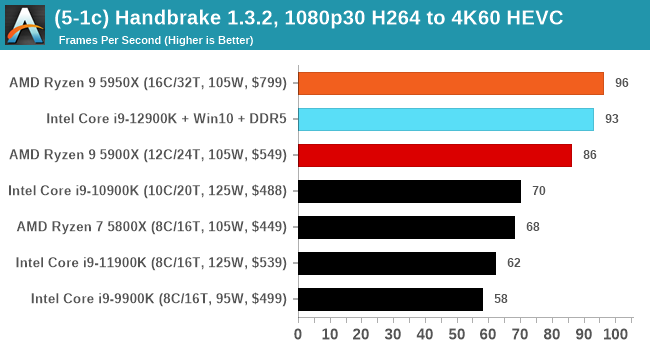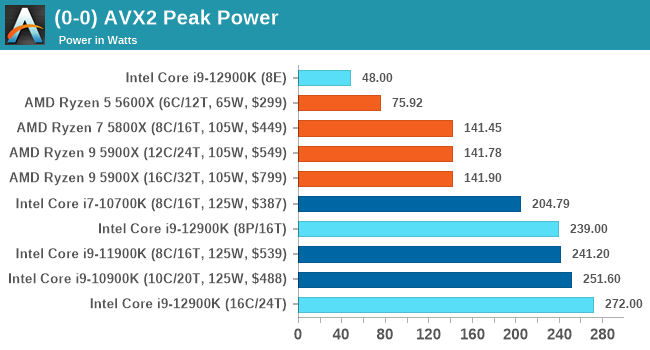Alder Lake
-
Suffice to say, Intel’s new 12th Generation Core family has added more variables to the mix than a traditional processor launch. The combination of different types of core, coming at a time where a new operating system has just been launched, but also at the inflection point of a new type of memory. Let’s break down some of the differences we’ve observed in our testing.
When we compare Windows 10 to Windows 11, purely on throughput benchmarks, we don’t find much difference. There are a few spots where Windows 11 has a slight advantage in multi-threaded workloads, but this comes down to how new threads are spawned between the performance cores and the efficiency cores. Intel stated that the performance between the two, at least for CPU workloads, should be within a few percentage points, stating that Windows 11 should have lower run-to-run variance. We can corroborate this in our testing. Windows 10 also had some scheduling issues with low priority threads, which we expect to be ironed out with updates.


Overall though, it’s no denying that Intel is now in the thick of it, or if I were to argue, the market leader. The nuances of the hybrid architecture are still nascent, so it will take time to discover where benefits will come, especially when we get to the laptop variants of Alder Lake. At a retail price of around $650, the Core i9-12900K ends up being competitive between the two Ryzen 9 processors, each with their good points. The only serious downside for Intel though is cost of switching to DDR5, and users learning Windows 11. That’s not necessarily on Intel, but it’s a few more hoops than we regularly jump through.
A blogger comments:
So what's the catch? If you're familiar with Intel's 9th, 10th, and 11th generation chips you already know: At full speed this thing could melt the polar ice caps. (AnandTech)
While it's rated at 125W - not much more than the 105W for AMD's high-end desktop chips - that's only the "base" power. "Turbo" power - meaning what it is supposed to run at under load - is 241W. What it actually runs at under load is 272W. AMD's 16 core parts peak at 141W.
You will need water cooling for this one.
-
-
Love the competition. We all win. I won't be needing to "upgrade" anytime soon. I look forward to watching this over the next 5 to 10 years. It was 10+ years between upgrades last time. I expect the 5950 processors to provide close to the same for me.
The Golden Cove core inside Alder Lake has reclaimed the single-threaded performance crown with an uplift in SPEC of 18-20%, which is in line with Intel’s 19% claim. This puts it ahead of Apple’s M1 Max or 6% (int) and 16% (fp) ahead of AMD’s Zen 3 core.
OK, now let's see Intel put this into a laptop.